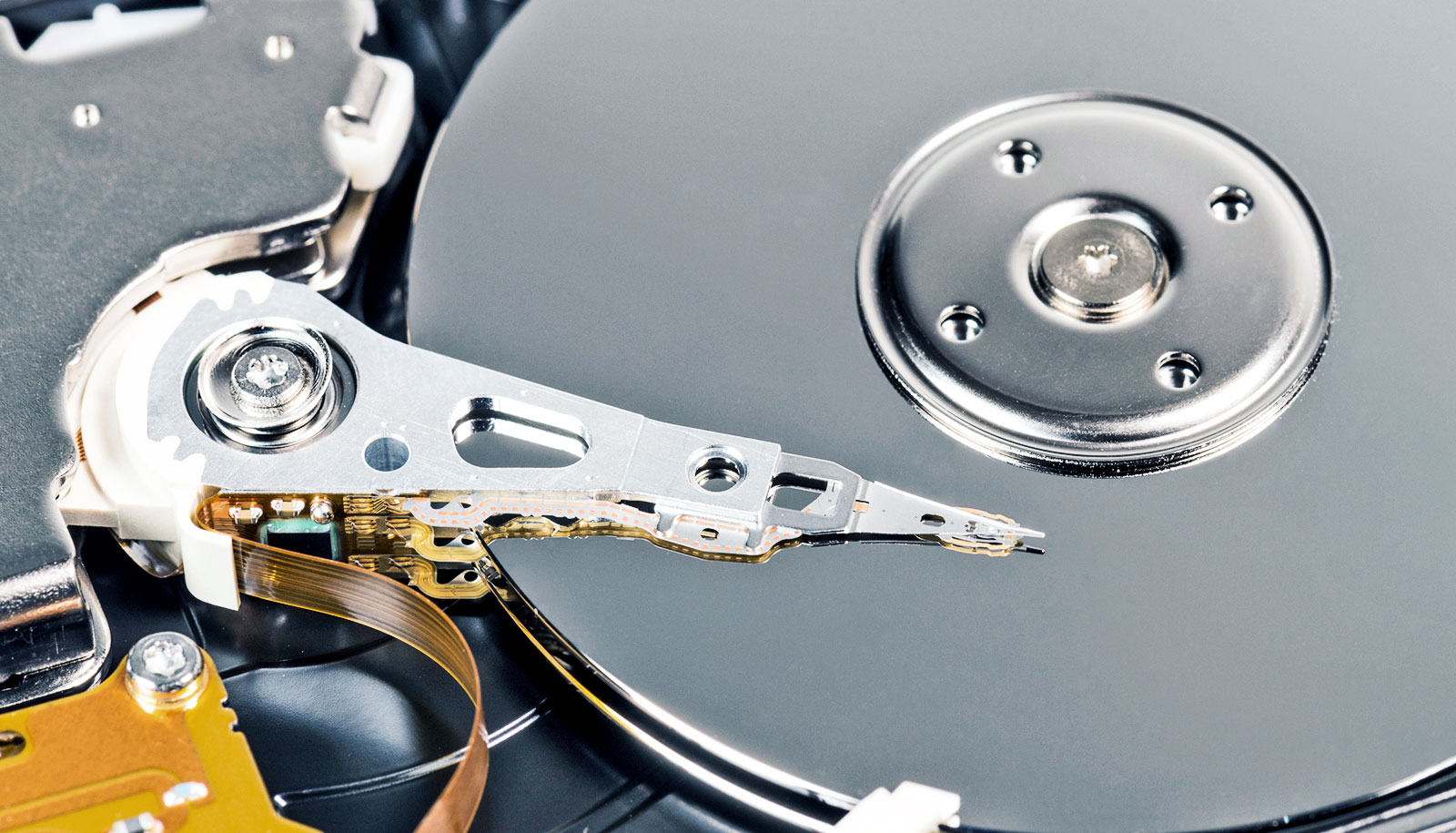Researchers are working on a new form of digital data storage, “racetrack memory.”
The research opens the possibility to both bolster computer power and lead to the creation of smaller, faster, and more energy efficient computer memory technologies.
“Racetrack memory, which reconfigures magnetic fields in innovative ways, could supplant current methods of mass data storage, such as flash memory and disk drives, due to its improved density of information storage, faster operation, and lower energy use,” says Yassine Quessab, a postdoctoral fellow at New York University’s Center for Quantum Phenomena (CQP) and lead author of the study in Scientific Reports.
“While additional development is necessary in order to deploy them in consumer electronics, this pioneering type of memory may soon become the next wave of mass data storage,” adds senior author Andrew Kent, a professor of physics.
Today’s devices, from smartphones to laptops to cloud-based storage, rely on a remarkable and growing density of digital data storage. Because the need will only increase in the future, researchers have been seeking ways to improve storage technologies—enhancing their capacities and speed while diminishing their size.
The new research stemmed from a goal to develop a new format of digital memory.
The team’s focus was on “a skyrmion racetrack memory,” an undeveloped type of memory that reverses the processes of existing storage.
Many current mass data storage platforms function like an old musical cassette tape, which reads data by moving material (i.e., the tape) with a motor across a reader (i.e., in the cassette player), then decodes the information written on the material to reproduce sound.
By contrast, racetrack memory does the opposite: the material stays in place and the information itself is moved across the reader—without the need to move mechanical parts, such as a motor.
A magnetic object called a skyrmion that researchers can move by applying an external stimulus, such as a current pulse, carries the information. A skyrmion, a magnetic texture with a whirling spin configuration, spins as if curled up in a ball. This ball of spins represents a bit of information that can be moved quickly as well as created and erased with electrical pulses. Skyrmions can be very small and moved at high speed at a low energy cost, thus enabling faster, high-density, and more energy-efficient data storage.
However, there remain barriers to this form of data storage.
“We found that small skyrmions are only stable in very specific material environments, so identifying the ideal materials that can host skyrmions and the circumstances under which they are created is a first priority for making the technology applicable,” observes Kent. “This has been the focus of our research thus far.”
The researchers’ tests indicated that magnetic materials which generate only small magnetic fields—materials known as ferrimagnets—are favorable for creating small skyrmions and moving them. They showed that magnetic interactions can be precisely controlled in these materials to favor the formation of skyrmions.
Additional researchers from the University of Virginia; the University of California, San Diego; the University of Colorado; and the National Institute of Standards and Technology. DARPA and the Department of Energy supported the work.
Source: NYU


